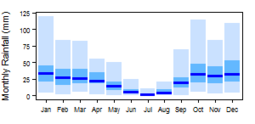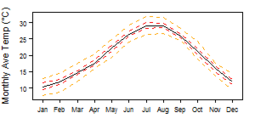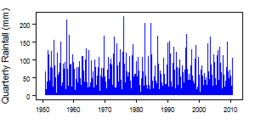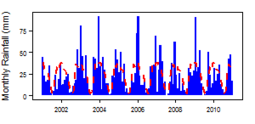Hydrogeology of Tunisia: Difference between revisions
No edit summary |
|||
| Line 110: | Line 110: | ||
This section provides a summary of the geology of Tunisia. More detail can be found in the references listed at the bottom of this page. ''Many of these references can be accessed through the [http://www.bgs.ac.uk/africagroundwateratlas/index.cfm Africa Groundwater Literature Archive].'' | This section provides a summary of the geology of Tunisia. More detail can be found in the references listed at the bottom of this page. ''Many of these references can be accessed through the [http://www.bgs.ac.uk/africagroundwateratlas/index.cfm Africa Groundwater Literature Archive].'' | ||
The geology map on this page shows a simplified version of the geology at a national scale (see [[Geology | the Geology resources page]] for more details). ''The map is available to download as a shapefile (.shp) for use in GIS packages.'' | The geology map on this page shows a simplified version of the geology at a national scale (see [[Geology | the Geology resources page]] for more details). ''The map is available to download as a shapefile (.shp) for use in GIS packages.'' | ||
[[File: Tunisia_Geology.png | | |||
[[File: Tunisia_Geology.png | center | 500px]] | |||
{| class = "wikitable" | {| class = "wikitable" | ||
| Line 152: | Line 153: | ||
|| | || | ||
|} | |} | ||
==Hydrogeology== | ==Hydrogeology== | ||
Revision as of 09:53, 11 August 2015
Africa Groundwater Atlas >> Hydrogeology by country >> Hydrogeology of Tunisia
Authors
Amira Mekni, INAT, Tunisia
Safouan Ben Ammar, ISTEUB, Tunisia
Kirsty Upton & Brighid Ó Dochartaigh, British Geological Survey, UK
Geographical Setting

General
Tunisia has a long coastline onto the Mediterranean Sea. In the north of the country is the Tunisian Dorsale mountain chain, which rises to 1,554 m. In the centre of the country are a series of east-west trending depressions, called chotts. The south of Tunisia is dominated by the Sahara.
| Estimated Population in 2013* | 10,886,500 |
| Rural Population (% of total) (2013)* | 33.5% |
| Total Surface Area* | 155,360 sq km |
| Agricultural Land (% of total area) (2012)* | 64.9% |
| Capital City | Tunis |
| Region | Northern Africa |
| Border Countries | Algeria, Libya |
| Annual Freshwater Withdrawal (2013)* | 2850 Million cubic metres |
| Annual Freshwater Withdrawal for Agriculture (2013)* | 76.0% |
| Annual Freshwater Withdrawal for Domestic Use (2013)* | 12.8% |
| Annual Freshwater Withdrawal for Industry (2013)* | 3.9% |
| Rural Population with Access to Improved Water Source (2012)* | 90.5% |
| Urban Population with Access to Improved Water Source (2012)* | 100% |
* Source: World Bank
Climate
Tunisia has a semi-arid Mediterranean climate in the north; arid in the centre, and desert (Saharan) in the south. Rainfall distribution is determined by the direction of the prevailing winter winds (north-west) and the presence of high ground, and is heaviest in the north (over 400 mm/year and up to 1,500 mm/year in the far northwest), declining towards the centre (150 to 300 mm/year) and becoming very light in the south (less than 150 mm/year and less than 50 mm/year in the far south), with some years of no rain.
-
Koppen Geiger Climate Zones
-
Average Annual Precipitation
-
Average Temperature
Rainfall time-series and graphs of monthly average rainfall and temperature for each individual climate zone can be found on the Tunisia Climate Page.
For further detail on the climate datasets used see the climate resources section.
Surface water
|
The main permanent surface watercourses which drain to the sea are in the north, mostly rising in the northwest and flowing eastwards. In the arid central reason, surface watercourses are ephemeral, flowing only for a few days or weeks a year. In the south, surface flows are rare and small. None of these central and southern ephemeral flows reach the sea; instead, surface water infiltrates over plains or in inland depressions (sabhkas).
|
 |
Soil
 |
Land cover
 |
Geology
This section provides a summary of the geology of Tunisia. More detail can be found in the references listed at the bottom of this page. Many of these references can be accessed through the Africa Groundwater Literature Archive. The geology map on this page shows a simplified version of the geology at a national scale (see the Geology resources page for more details). The map is available to download as a shapefile (.shp) for use in GIS packages.
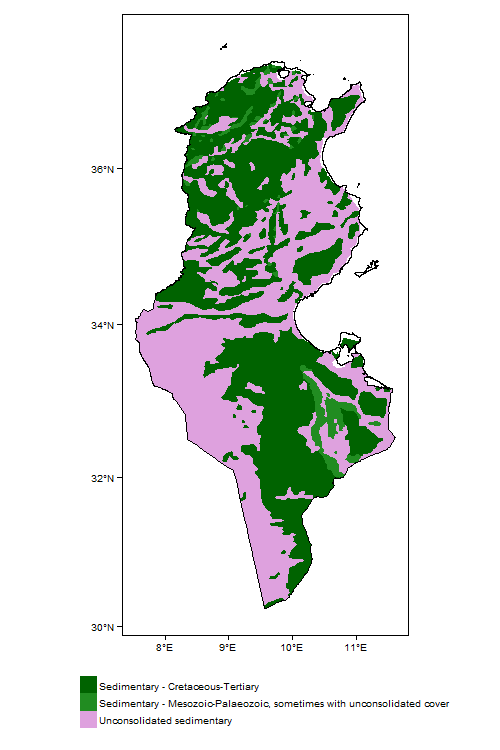
| Key Formations | Period | Lithology | Structure |
| Geological Environment 1 | |||
|---|---|---|---|
| Name of formation1 | Time period | Description | Structure |
| Geological Environment 2 | |||
| Geological Environment 3 | |||
Hydrogeology
This section provides a summary of the hydrogeology of the main aquifers in Tunisia. More information is available in the references listed at the bottom of this page. Many of these references can be accessed through the Africa Groundwater Literature Archive. The hydrogeology map on this page shows a simplified version of the type and productivity of the main aquifers at a national scale (see the Aquifer properties resource page for more details). The map is available to download as a shapefile (.shp) for use in GIS packages.
File:COUNTRY Hydrogeology.png
Unconsolidated
| Named Aquifers | General Description | Water quantity issues | Water quality issues | Recharge |
Sedimentary - Intergranular Flow
| Named Aquifers | General Description | Water quantity issues | Water quality issues | Recharge |
Sedimentary - Intergranular & Fracture Flow
| Named Aquifers | General Description | Water quantity issues | Water quality issues | Recharge |
Sedimentary - Fracture Flow
| Named Aquifers | General Description | Water quantity issues | Water quality issues | Recharge |
Basement
| Named Aquifers | General Description | Water quantity issues | Water quality issues | Recharge |
Groundwater Status
Groundwater quantity
Groundwater quality
Groundwater use and management
Groundwater use
Groundwater management
Groundwater monitoring
Transboundary aquifers
For further information about transboundary aquifers, please see the Transboundary aquifers resources page
References
The following references provide more information on the geology and hydrogeology of Tunisia. These, and others, can be accessed through the Africa Groundwater Literature Archive
Geology: key references
Hydrogeology: key references
Return to the index pages
Africa Groundwater Atlas >> Hydrogeology by country >> Hydrogeology of Tunisia



